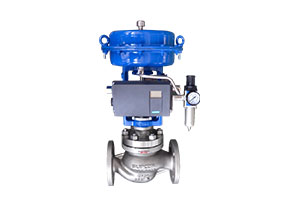Nov. 16, 2020
Valves are widely used in all walks of life in industrial production and life. They are indispensable devices for domestic water pipelines and industrial fluid pipelines. Then we should how we perform routine maintenance on the valve.
The casting quality of iron castings is not high, and there are defects such as blisters, loose tissues, slag inclusions on the valve body and bonnet body;
Day freeze cracking;
Poor welding, with defects such as slag inclusion, non-welding, stress cracks, etc.;
The cast iron valve is damaged after being hit by a heavy object.
Improve the casting quality, and carry out the strength test strictly according to the regulations before installation;
Valves whose temperature is below 0° and 0° should be kept warm or mixed with heat, and the valves that are out of service should be drained of water
The welding seam of the valve body and bonnet composed of welding should be carried out in accordance with the relevant welding operation regulations, and the flaw detection and strength test should be carried out after welding;
It is forbidden to push or put heavy objects on the valve, and it is not allowed to hit cast iron and non-metal valves with a hand hammer. The installation of large-diameter valves should have a bracket.
Wrong selection of packing, not resistant to medium corrosion, not resistant to valve high pressure or vacuum, high temperature or low temperature use;
The packing is not installed correctly, there are defects such as replacing the big with the small, the screw-wound joint is not good, tightening and loosening;
The filler has exceeded its service life, has aged, and lost its elasticity;
The valve stem is not high in precision, and has defects such as bending, corrosion, and wear;
The number of packing circles is insufficient and the gland is not tightly pressed;
The gland, bolts, and other parts are damaged, making the gland unable to be compressed;
Improper operation, excessive force, etc.;
The gland is skewed, and the gap between the gland and the valve stem is too small or too large, causing the valve stem to wear and the packing to damage.
The material and type of filler should be selected according to the working conditions;
Install the packing correctly according to the relevant regulations, the packing should be placed and compressed one by one, and the joint should be 30℃ or 45℃;
The packing that has been used for a long time, is aging, or is damaged should be replaced in time;
The valve stem should be straightened and repaired after it is bent or worn, and the damaged one should be replaced in time;
The packing should be installed according to the specified number of turns, the gland should be tightened symmetrically and evenly, and the compression sleeve should have a pre-tightening gap of more than 5mm;
Damaged glands, bolts, and other parts should be repaired or replaced in time;
The operating procedures should be followed, except for the impact handwheel, operate at a constant speed and normal force;
The gland bolts should be tightened evenly and symmetrically. If the gap between the gland and the valve stem is too small, the gap should be appropriately increased; the gap between the gland and the valve stem should be too large and should be replaced.
The sealing surface is unevenly ground and cannot form a tight line;
The top center of the connection between the valve stem and the closing part is suspended, incorrect or worn;
The valve stem is bent or incorrectly assembled, which makes the closing part skewed or misaligned;
The quality of the sealing surface material is improperly selected or the valve is not selected according to the working conditions.
Correctly select the material and type of the gasket according to the working conditions;
Carefully adjust and operate smoothly;
The bolts should be tightened evenly and symmetrically, and a torque wrench should be used when necessary. The pre-tightening force should meet the requirements and should not be too large or small. There should be a certain pre-tightening gap between the flange and the threaded connection;
The gasket assembly should be aligned at the center, and the force should be even. The gasket is not allowed to overlap or use double gaskets;
The static sealing surface is corroded, damaged, and the processing quality is not high. Repair, grinding, and color inspection should be carried out to make the static sealing surface meet the relevant requirements;
Pay attention to cleaning when installing the gasket. The sealing surface should be cleaned with kerosene and the gasket should not fall to the ground.
We're valve suppliers. Please feel free to contact us.

Previous: About The Butterfly Valve
Headquarter Add.: SUPCON Park, No.309 Liuhe Road, Binjiang District, Hangzhou, 310053, China.
Tel.: +86 571 8111 9774
Fax: +86 571 8111 9737
E-mail: [email protected]
